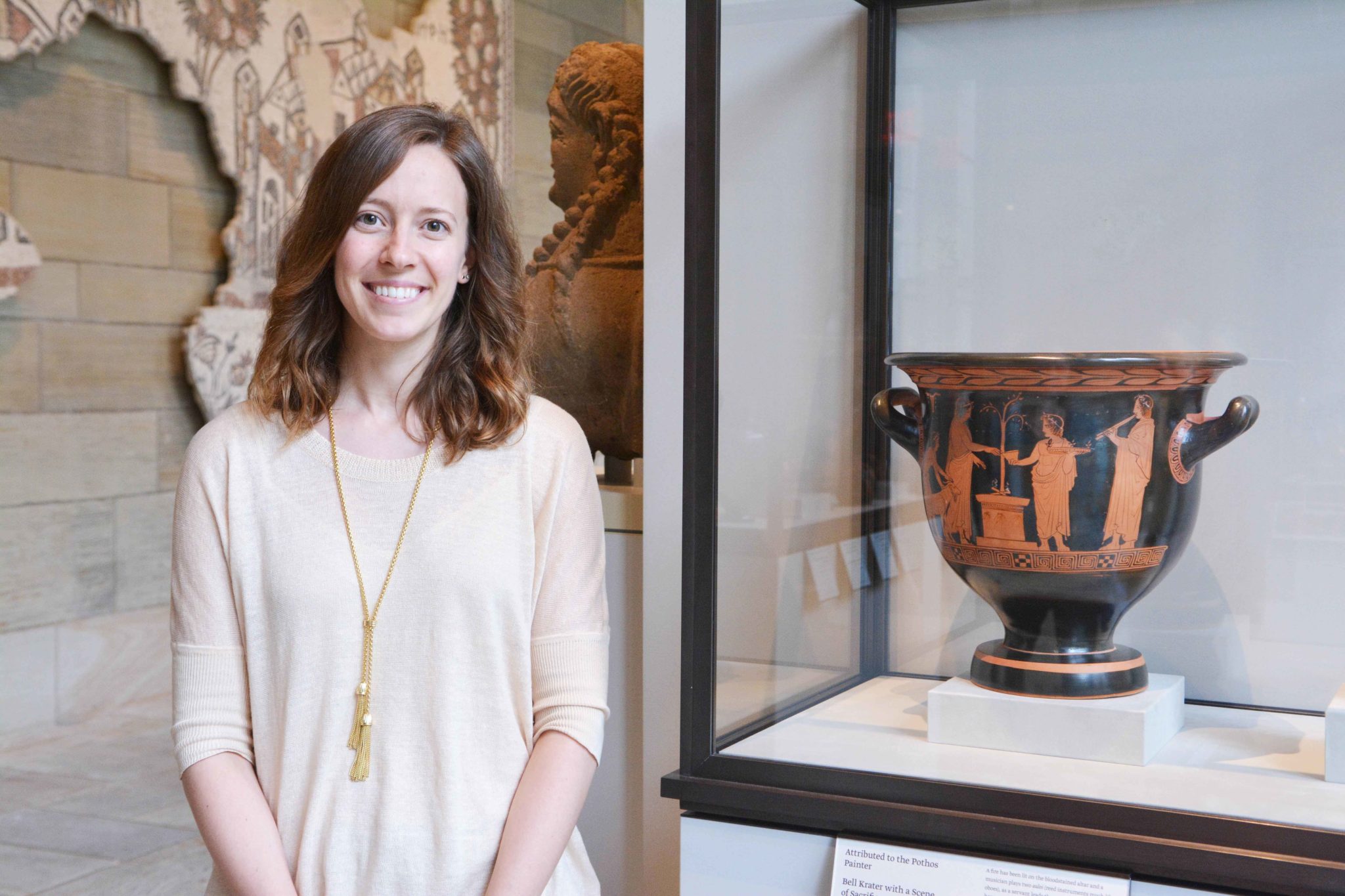
“Sights and Sounds of Ancient Ritual,” the new exhibit at the Yale University Art Gallery, began with the vision of one person: Carolyn Laferrière GRD ’17.
The exhibition, which features artwork from Greece, Rome, Western Europe, Egypt, West Africa, the Near East, China and Mesoamerica between 1500 BCE and 1500 CE, focuses on the sights and sounds of religious rituals throughout antiquity.
Laferrière, who is currently a postdoctoral associate in the Yale Program for the Study of Ancient and Premodern Cultures and Societies, traces her love of art and ancient civilizations to her upbringing.
Laferrière’s aunt, who gave Laferrière art books based on exhibitions at the National Gallery of Canada, first sparked her interest in art. Laferrière’s father also fostered her interest in ancient civilizations with his passion for Greco-Roman antiquity. And her interest in the intersection of art and religion was influenced in part by her Catholic upbringing.”
“I became fascinated by the rituals people still undertake today — they’re determined by the objects and tableaux people create,” she said. “Art and ritual work together. I think about these churches full of art and how that relates to the rituals performed in them. I’m interested in how art is used to mediate that boundary.”
These influences and inspirations come together in the exhibit. All of the objects, though they stand alone as works of art, also have a function in religious rituals.
“The ancient world was not a place that was quiet. I’d like people to think about the spectacle and sounds of these experiences — the objects are beautiful and stand on their own, but they all had a function and forged a connection between worshippers and gods,” Laferrière said.
Milette Gaifman, an art history professor and Laferrière’s longtime adviser, described Laferrière’s work as “very exciting — it belongs to the more recent scholarship in the humanities that considers the role of the senses in religious experience.”
“What is particularly striking with this newly opened exhibition is that it explores the relationships between sight and sound cross-culturally and brings together various contexts that we don’t normally consider side by side,” added Gaifman.
Laferrière’s favorite object in the YUAG exhibit, the sistrum displayed at the beginning of the show, exemplifies this theme. The sistrum, a small blue-green musical instrument from Ancient Egypt, comprised of a temple-like structure resting upon the head of the solar deity Hathor, who is represented with cow ears. Laferrière said she was struck by the synesthesia of the object.
“What’s remarkable is the sound was meant to evoke the sounds [Hathor] would have made when she walks toward her temple. It is an onomatopoeic sound — the name of the instrument, séchech is the name of the instrument and the sound,” Laferrière explained. “In this way the object is instrumental in welcoming the goddess to her temple.”
Laferrière also noted that the color blue was rare in the ancient world, creating a “supernatural” dimension to the object.
Daphne Martin ’19, the YUAG’s Betsy and Frank H. Goodyear, Jr., B.A. 1966, intern, curated a section of the exhibit that explores the color blue. Martin said that “this exhibition was a unique opportunity to consider the prestige and luxury afforded to the color blue in ancient societies.”
Laferrière hopes that viewers will understand the multi-sensory aspect of ritual.
The YUAG’s Curator of Ancient Art Susan Matheson commended Laferrière’s work in “guiding every aspect of this exhibition, from the initial vision for the concept to the selection of the objects to the elegant design of the installation and her meticulous attention to detail.”
Matheson said that Laferrière “created a memorable opportunity for visitors to experience ritual objects across time and cultures in a new way.”
“As her first exhibition, it is a perfect launch for a curatorial career,” Matheson said.
Laferrière started work on the exhibit in September 2017.
Claire Kalikman | claire.kalikman@yale.edu







